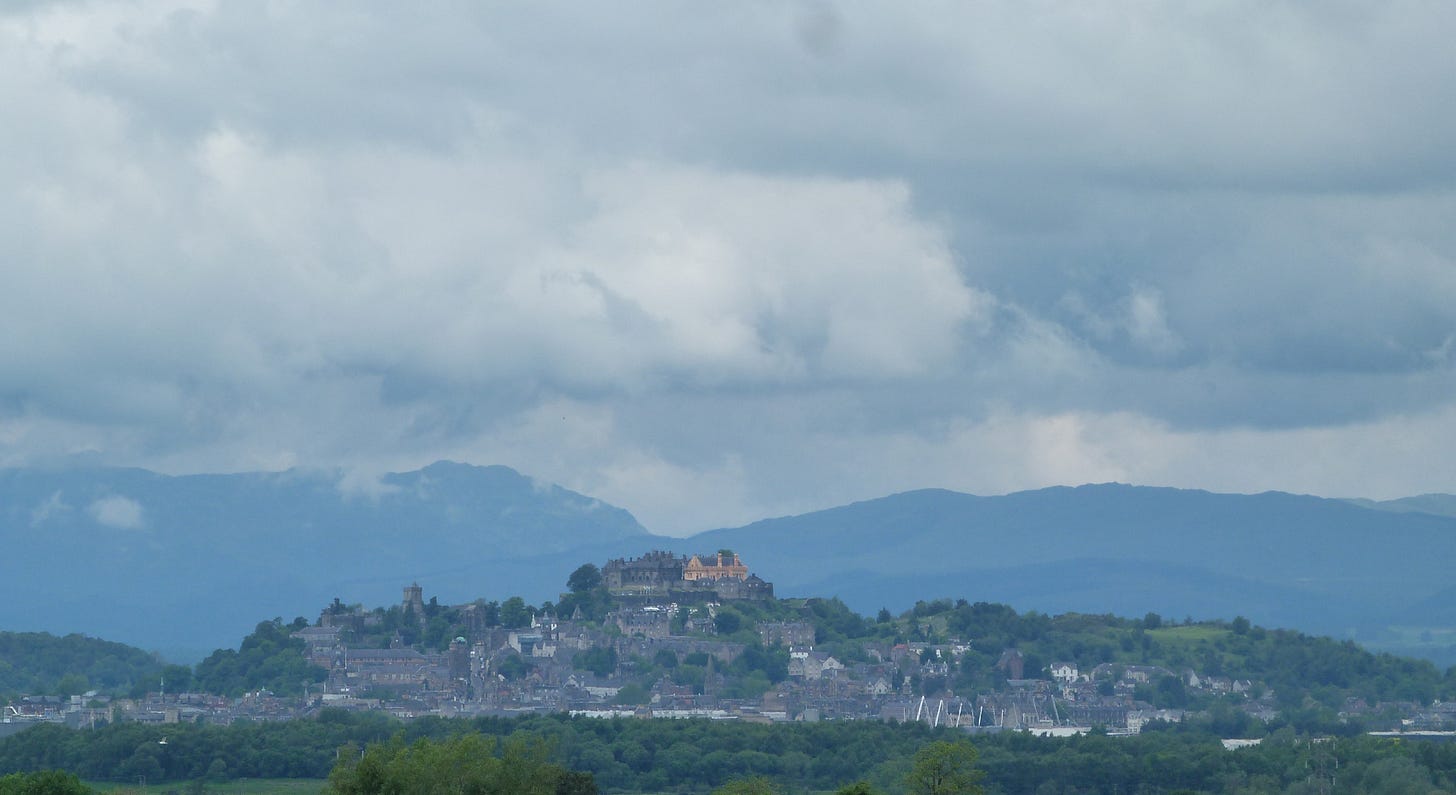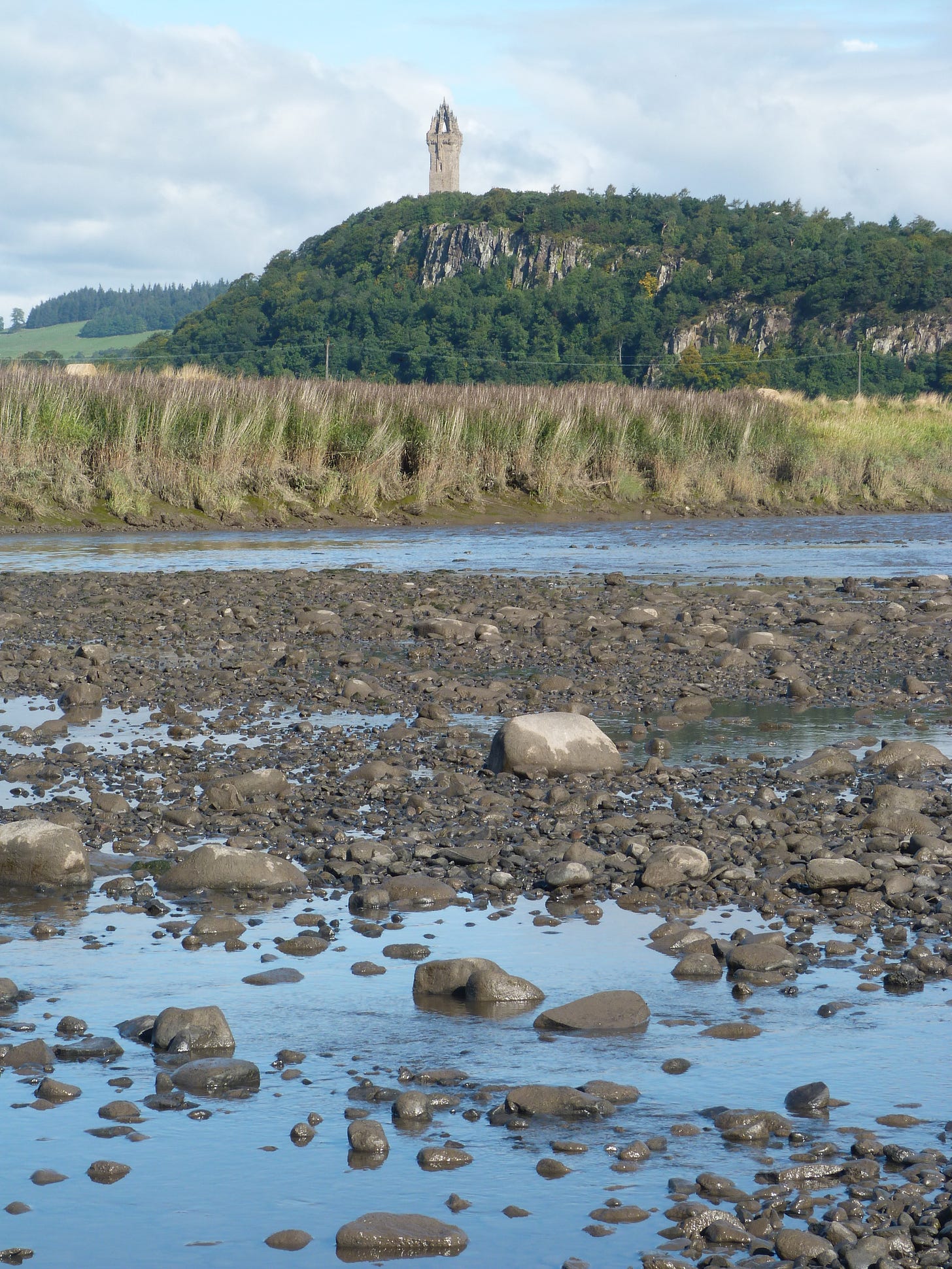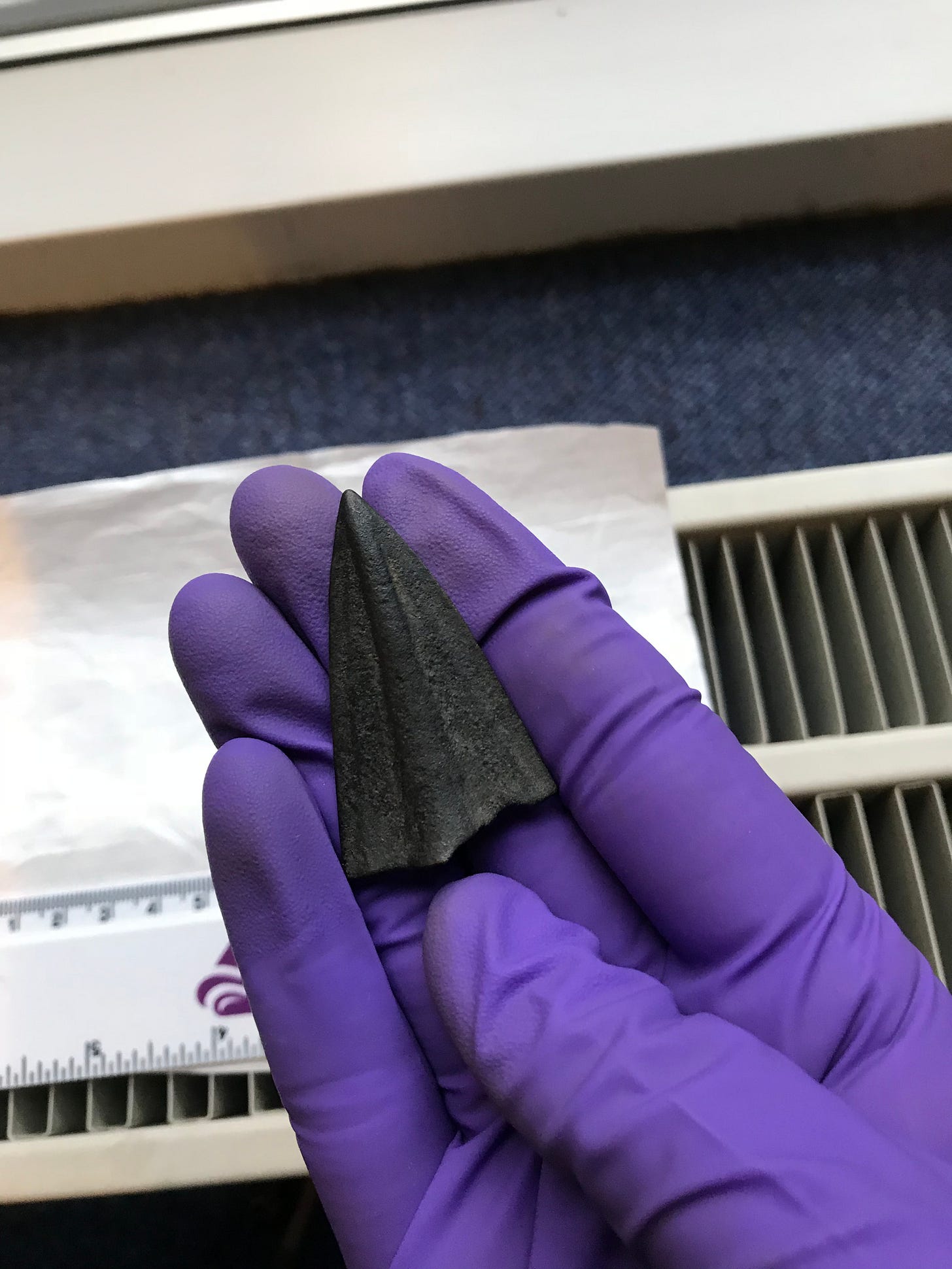Welcome to my regular piece of research, the second of two weekly blogs I publish. The Monday newsletter summarises of all the interesting history and archaeological things happening round Stirling. These are both free but if you like what I do, you can support the expenses of my archaeological digs by becoming a paid subscriber, which gives you exclusive access to the results. Regardless I hope you enjoy the blog and perhaps you’ll come along to a dig sometime!
The following is an extract from my first book about Stirling Digging into Stirling's Past: Uncovering the Secrets of Scotland's Smallest City, which is available from The Smith Museum, The Book Nook, Made in Stirling, The Legends Coffee House at the Wallace Monument, The Alloa Hub…me and Amazon.
What’s Stirling’s biggest secret? The meaning of Stirling! The first recorded version, ‘Striuelin’ dates from around AD 1124, when the burgh was established by David I. Lots of people think it’s older and dates to the period around AD 600-900, when what had been the British province of Manau was conquered by the Angles from the south, who were then pushed out by Picts from the north. The Britons reacted to this by burning down Dunblane, before being brought to heel by Kenneth MacAlpin, the first King of Scotland… then the Vikings arrived! Under this theory, because of all of this bloodshed, Stirling might be ‘Striveling’, -ing is old English for place, and ‘strive’ is a synonym for strife or conflict, so ‘Place of Conflict’… and this one is my favourite!
A more recent theory by Professor Thomas Owen Clancy of Glasgow University looks at the possible Gaelic roots of Stirling (‘srib-linn’: stream pool, although the modern Gaelic rendering is Sruighlea) and connects it to the place at which the River Forth became tidal, or perhaps more likely, the uppermost reach of the Forth estuary being navigable, possibly reflecting an early harbour here.
Significantly, this means that ‘Stirling’ refers to the River Forth and not the town, which would have been named subsequently for its place on the river. Of course this might mean that Stirling had an older name, one that reflected the settlement and not the river. There is one possibility, a name mentioned by the Northumbrian monk, Bede. Around AD 700, he talked about ‘urbs Giudi’, the City of Giudi and he named the Firth of Forth the Sea of Giudi. We cannot be precisely certain but perhaps we don’t live in Stirling at all, perhaps we live in Giudi… anyone for a rebranding exercise?
Before srib-linn
While the main crossing point was clearly at Stirling, hence the name srib-linn, there is clear evidence for an older crossing point at Cambuskenneth (The Abbey Ford), and while it was certainly used by Abbots, Kings and Queens, its earliest use was around 2500 BC.
Now, if you follow my stellar (cough-splutter) career, you may have spotted me from time to time on TV. In 2018 I helped make a programme on metal detecting in the Forth with Rick Edwards, Beau Ouimette (yes, I didn’t know who they were either!) and the wonderful people of the Scottish Artefact Recovery Group… Scotland’s most ethical metal detectorists! We found an amazing amount of treasure for just a morning’s work, including an unused Late Bronze Age axe, a broken Late Bronze Age spear-tip, a Roman coin and a coin of David I, perhaps one the rarest coins in Scotland.
All incredible stuff, however, my chief memory is getting stuck in 1m deep mud (please note the location is extremely dangerous and you need the Council’s permission to metal detect there) with the tide constantly rising and being filmed the whole time. Readers, please forgive me but after 10 minutes of struggle, watching the rising tide, I swore profusely, and then when that didn’t work, I swore again. The director smiled at me and said that it was all excellent stuff, but could we do it again without the swearing? Eventually, I was extricated from the mud, but I had to abandon my waders, which to my certain knowledge are still there. If you find them please don’t try to return them to me, they now belong to the Gods of the Forth… the last tribute in a long line of gifts!








I thought an old name for Stirling was Snowdon.
Thanks, fascinating stuff. Places names are a source of endless interest.